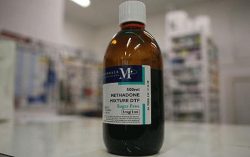Why You Need to Stick to Your Methadone Dosage
Methadone is a long acting synthetic opiate that serves 3 general pharmacological purposes in medicine. It has a demonstrated success in the detox and maintenance treatments for opiate addictions and as a powerful pain reliever, methadone provides the much needed relief to those who suffer from chronic pain without many of the adverse effects of other opiates.
Methadone, however, is a particularly complex medication and you need to stick to your methadone dosage as prescribed while under the careful, ongoing, supervision of your prescribing physician or treatment professional.
Potential Risks and Considerations
Whether you are using methadone as an opiate addiction therapy treatment or for the treatment of pain, your methadone dosage should be prescribed to afford you the highest degree of safety and efficacy. Mismanaging doses or abusing methadone can lead to serious health risks and according to the Centers for Disease Control and Prevention, “rates of deaths and emergency department (ED) visits involving methadone have increased nationwide.”
You should stick to your methadone dosage to prevent potential harms because:

A methadone prescription is made specifically based on your needs. Deviating from it is dangerous.
- Methadone is a central nervous system depressant that can lead to dangerously slowed breathing and cardiac arrhythmias which can result in overdose and death.
- Methadone is metabolized differently in everyone. What may be a safe dose for one person may lead to overdose in another.
- Methadone has an unpredictable, but, long half life. In an opiate tolerant person, it can last 24 to 36 hours, but, in an opiate naïve person, that time period can extend up to 55 hours.
- Analgesic effects may only last up to 8 hours and additional doses should not be taken unless otherwise prescribed because of the increased risk of toxic buildup and overdose.
- During the first week of taking methadone, it is crucial to work closely with your provider. They need to closely monitor the methadone’s absorption and metabolism with prompt awareness of any adverse effects, to prevent overmedicating you while your tolerance and steady state of dosing is established safely.
- Methadone is stored in the liver, bloodstream, and other bodily tissues until it can attach to opiate receptors in the brain where it is used to produce the desired effects. If too much is taken too quickly and accumulates in the blood plasma levels, it can lead to adverse effects and overdose.
- Methadone can interact with many medications. It should not be taken with other opiates, alcohol, sedatives, muscle relaxers, benzodiazepines, or certain MAOI medications.
- Methadone will cause uncomfortable withdrawal symptoms if you suddenly stop or decrease its use. A gradual tapering off of the medication is advised while under the supervision of your physician.
The Steady State of Dosing
You need to stick to your methadone dosage to achieve and maintain a steady state which is based on multiples of half-life elimination. The optimal dosage of methadone works its best when you reach a steady state of dosing where the amounts of methadone consumed are equal to the amounts eliminated in the urine, your symptoms are being controlled, and you are not suffering any adverse effects.
This steady state is achieved as you build up the long acting methadone in your liver, bloodstream, and bodily tissues and can take up from 5 to 7.5 days to establish. Then, it can steadily be released to your opiate receptors in the brain to control your conditions as your progress toward your recovery. Your safety is important and this steady state of dosing can only be appropriately determined between your close interactions with your provider and your commitment to stick to your methadone dosage.
How is Methadone used in the Treatment of Opiate Addictions?
Methadone has a long track record of being a safe and well tolerated medication in the treatment of opiate addictions. It is a corrective treatment approach that is not meant to be a cure, but, rather to help stabilize the individual during recovery while improving their health and overall functioning. It suppresses withdrawal symptoms, decreases cravings for short acting opiates such as heroin and morphine, reduces illicit opiate use and associated behaviors, and blocks the effects of other opiates to deter their abuse.
Because methadone has a much slower duration of action, the opiate dependent person can alleviate the ups and downs of cravings, intoxications, and withdrawals that have become the obsessions of their life. At optimal dosages, the person on methadone should not experience adverse euphoric or sedative effects. According to Harvard Medical School, “Studies show that they are less depressed, more likely to hold a job and maintain a family life, less likely to commit crimes, and less likely to contract HIV or hepatitis”
How is Methadone used in the Treatment of Pain?
Methadone because of its variable rates of metabolism, absorption, analgesic potency and unpredictable half-life, methadone should only be taken once a day unless otherwise prescribed. It should only be used to control severe and chronic pain, taken in the least dosage amounts and intervals possible to control symptoms, and never taken for acute, “breakthrough, or “as needed” pain.
If you are taking methadone for pain you must remember that it works differently from other opioids and compromised health issues can have an impact on your ability to metabolize, store, or use methadone. You should not increase the dose or take more of it because although the analgesic effects may appear to have worn off, the methadone’s long half-life in your system can still cause you to overdose. You should always advise your provider of your concerns and get a safe medical evaluation to determine any safe dosage adjustments.